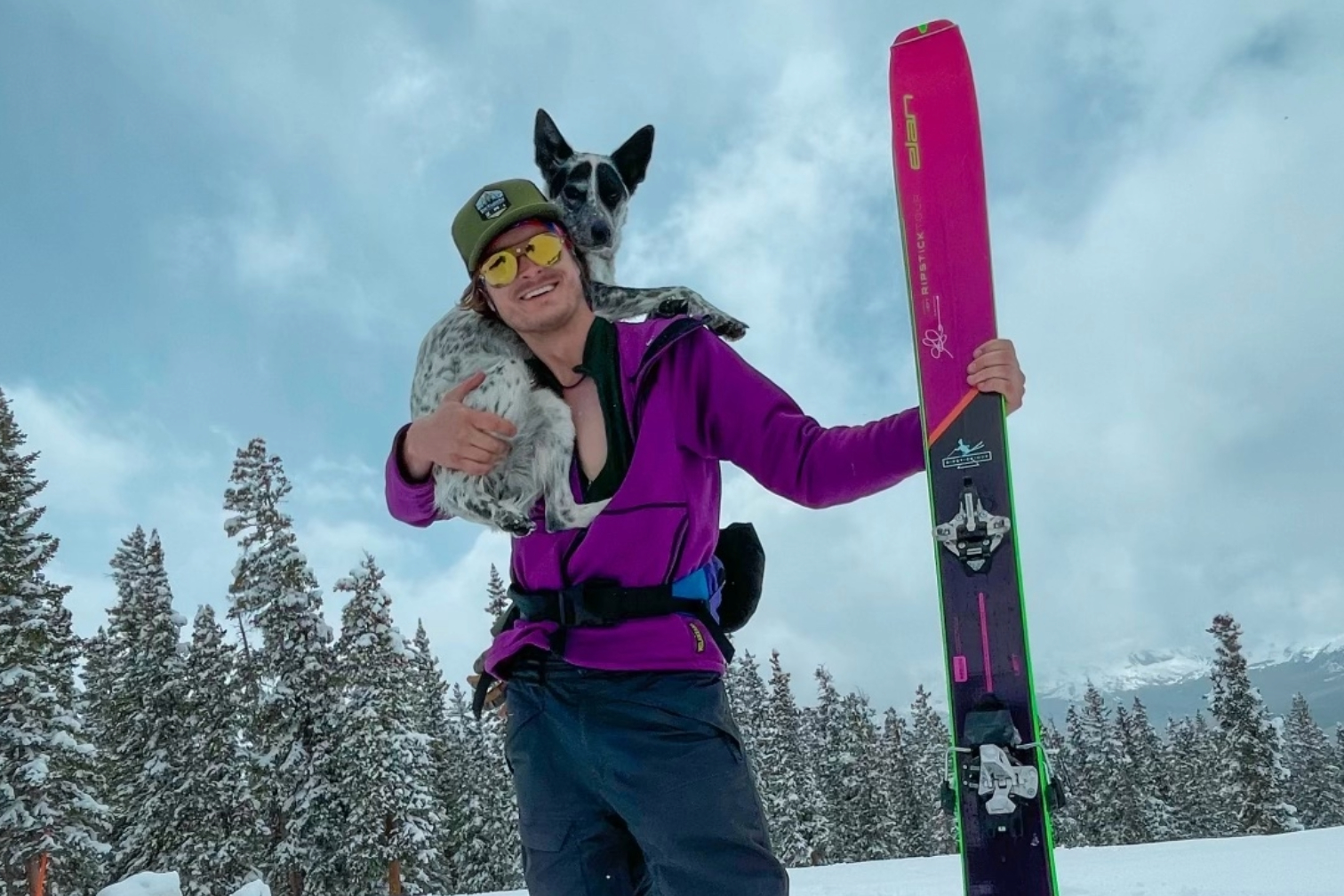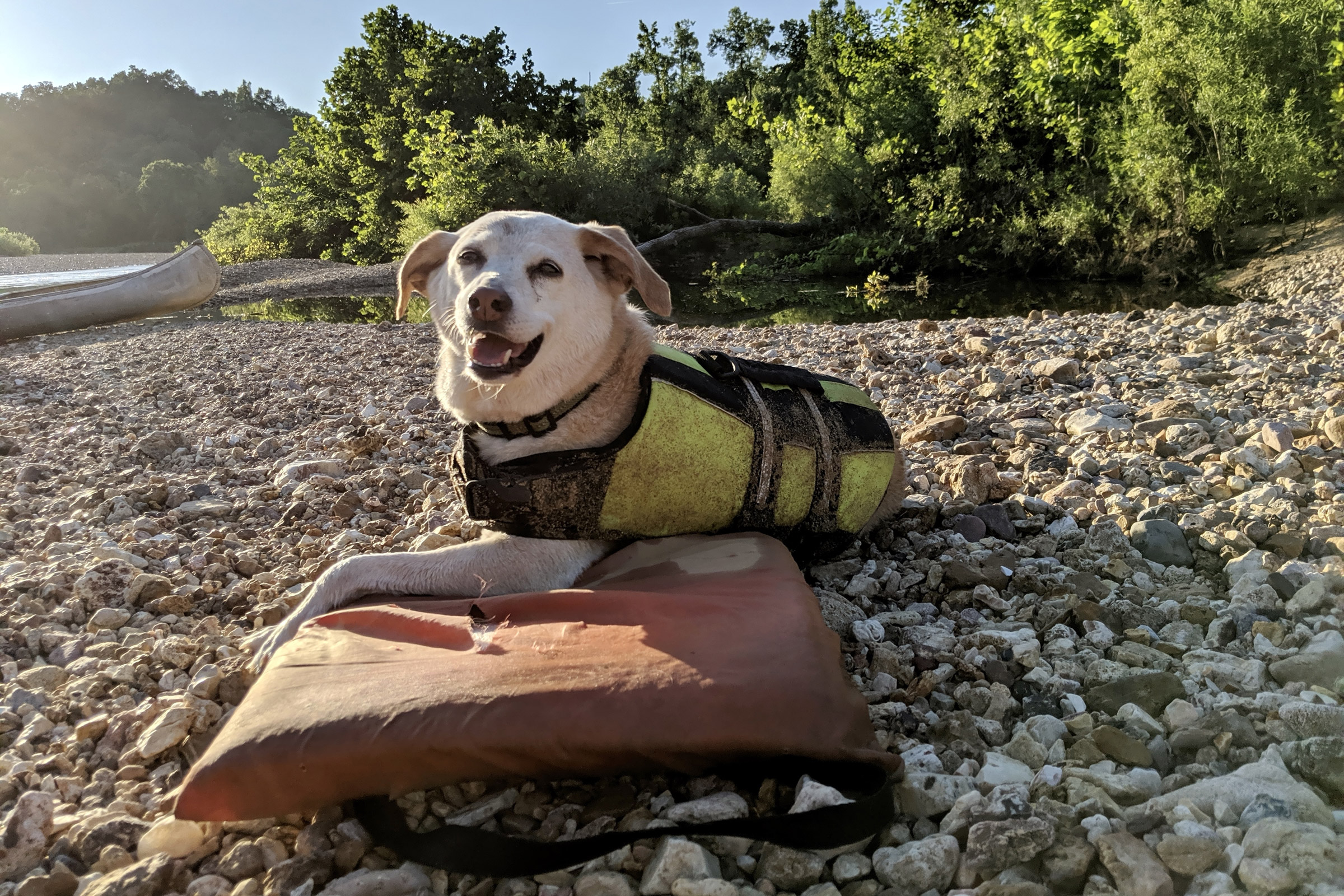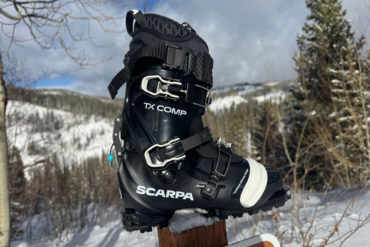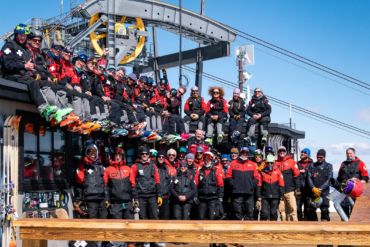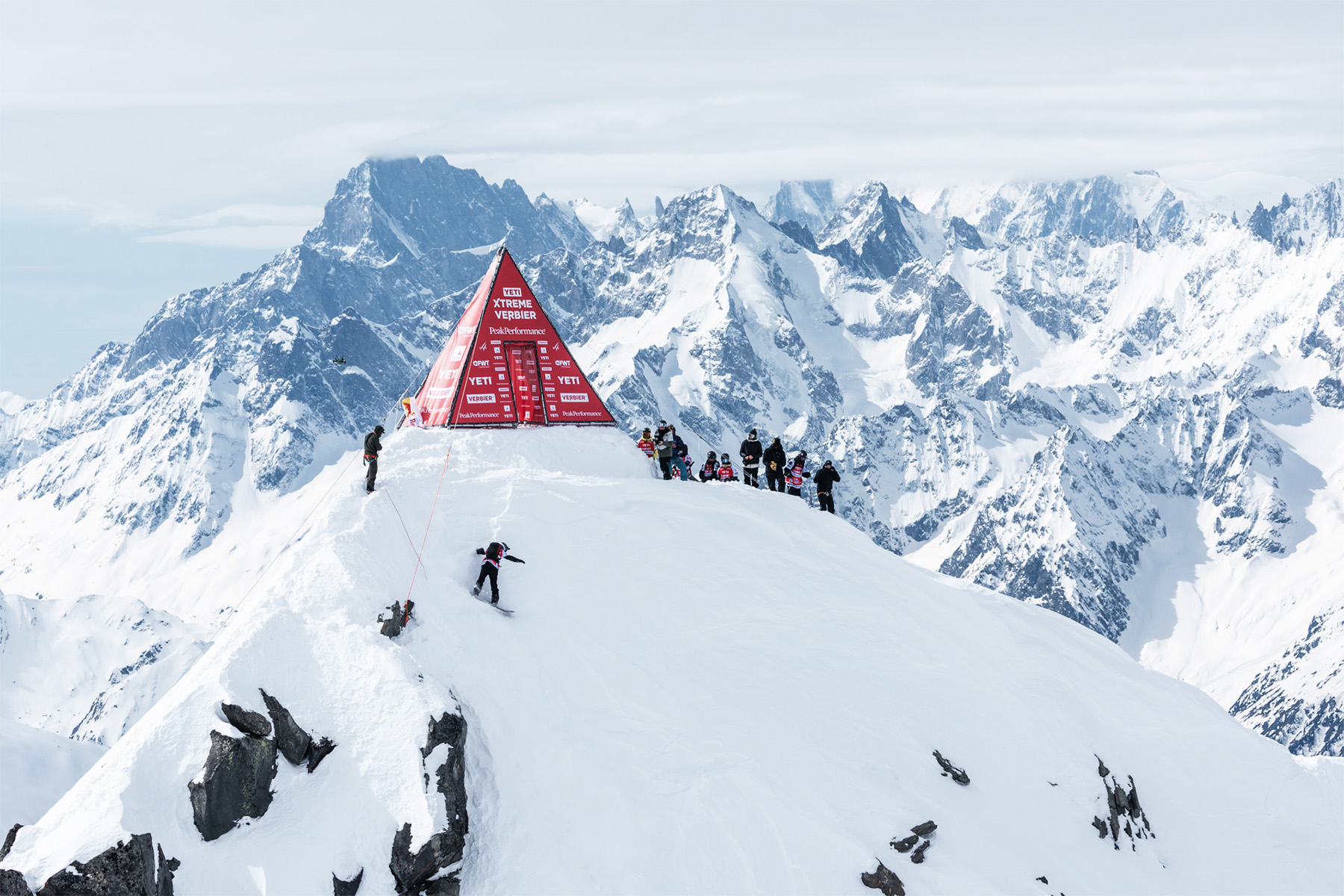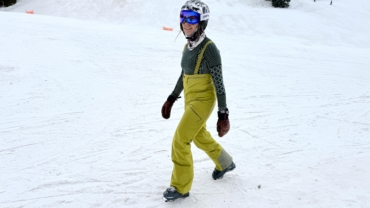Few things enhance the experience of a great backcountry ski day. But the wild-eyed, ear-to-ear grin of your canine companion bounding beside you is definitely one of them. Skiing with your dog takes the sport to another level — whether you’re doing cross-country, classic, touring, or backcountry.
Skiing is my dog’s favorite sport. She hikes, runs, comes mountain biking, and sometimes even joins on the occasional paddle day. When we roll up to a snowy backcountry trailhead, though, she absolutely loses her mind. The buzz she feels about skiing is clearly overwhelming.
But there are some serious considerations to take into account when you bring four-legged friends along skiing — especially in the backcountry. According to John Reller, an avalanche rescue dog trainer with Colorado Rapid Avalanche Deployment (C-RAD), some forethought, preparation, and attentiveness can go a long way in ensuring that both dogs and owners have a good day.
“I always try to be mindful and respectful of [my dogs’] capabilities and limitations, and making sure I’m putting them in positions to have a great time and not get injured,” Reller told me. “Because [they’re] such a loyal pack animal, dogs are willing to follow us until they ’til they drop over from exhaustion,” or, he adds, to follow us unknowingly into dangerous terrain.
Reller has worked with avalanche dogs since 1988 when he became a ski patroller in Summit County, Colo. He started training rescue dogs 2 years later in 1990 and hasn’t stopped. He’s owned five avalanche dogs and said he is currently training his sixth.
That’s all to say, Reller has spent a lot of time in the backcountry with canine partners. He’s as close to an authority on the subject as there is.
So, GearJunkie got ahold of him to talk about the joy of skiing with dogs in the backcountry and how people can keep themselves, their dogs, and others safe while they’re out there carving turns.
Skiing With Your Dog: Canine Considerations
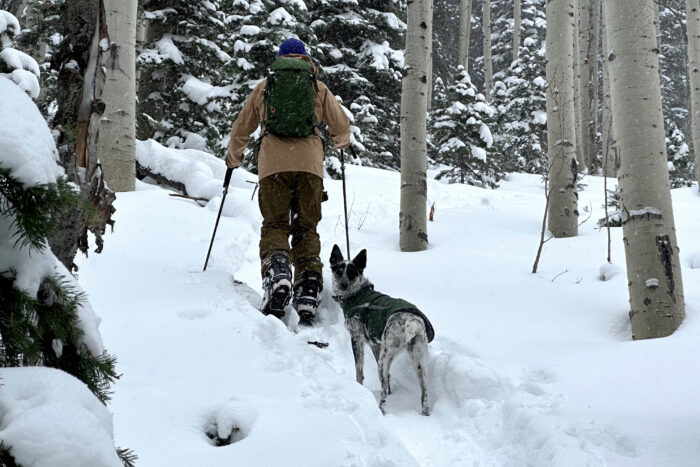
Obviously, different dogs will have different levels of stamina and cold endurance — just like people. Reller said a lot of that comes down to the breed of your dog. But individual personalities and levels of fitness and training play big roles as well. So, know your dog and do your best to match the adventure at hand to their abilities.
How old are they? How thick is their coat? Does snow clump up in the dog’s paws easily? How far do they normally walk or hike? Are they in good health? These are all preliminary questions that most reasonable pet owners will ask themselves without prompting.
But there are other considerations as well. And some might not be so self-evident.
Keep It Mellow
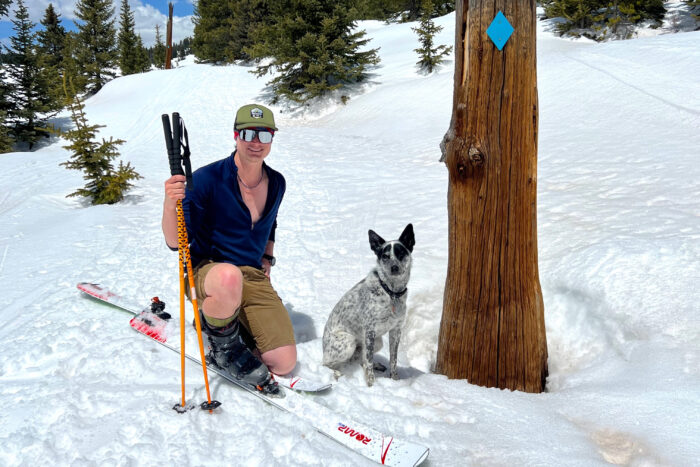
Dogs don’t have avalanche training. They don’t understand slope angles, how to identify avi paths, or how to stay out of them. They also can’t technically consent to going somewhere dangerous.
That’s why, when it comes to skiing with dogs in avalanche terrain, Reller recommends simply, don’t.
“Keeping [dogs] safe is keeping them out of avalanche terrain,” he said.
Over the years, he has seen more and more search and rescue calls for dog-related incidents. He and other rescuers have shown up on scenes where dogs had triggered avalanches that buried them or their owners. He referenced one situation where a dog was buried and a nearby group of skiers heard the commotion and came to help, thinking a person was in trouble.
“They put themselves into more exposure by rushing into that area and not knowing the details,” Reller said.
Beacons Aren’t for Dogs
It is also sternly frowned upon to put avalanche beacons on dogs, or their packs or collars. If the owner and dog are both buried, there is no way to tell beacon signals apart. So it becomes a roll of the dice for the rescuer. They might waste precious time digging out a dog and potentially lose a human life.
Within the industry, Reller said it’s discouraged to put any rescue device on a dog that would go on a human. As such, the risk of avalanche burial for dogs is particularly dangerous. There are some rescue devices out there made for dogs, but none are approved by C-RAD or any search and rescue group.
Experience With Skis
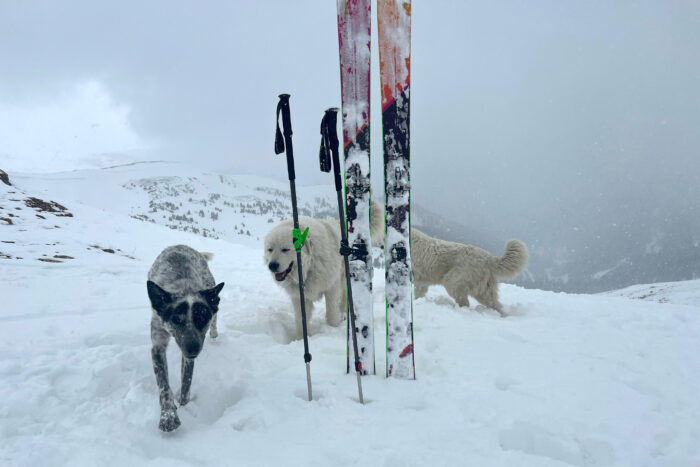
If your dog is new to skiing — whether that’s in the backcountry or on a cross-country track — they might not be familiar enough with skis or boards to know to keep their distance.
“Good ski edges will just slice a dog’s leg or paw,” Reller said. “So if they’re jumping around in front of you or they are walking on your skis behind you, just be aware that that can be a real serious situation if that edge catches them.”
I can attest to this. Last season my dog (who has grown up around skis and boards) got too close to my partner while we were descending. The board nicked her ankle and opened her up about 2 inches above her paw. It could have easily sliced a tendon or artery and we would have been in dire straits, being miles from cell service, let alone a vet. Luckily it wasn’t bad. But the wound took weeks to heal.
Training a dog to stay away from skis can take time. Peruse the internet and you’ll find advice on how to do it — most of which revolves around instilling a fear of ski poles in your furry friend (or using the poles as a visual sign/barrier to stay away from your edges).
No matter how you do it, keeping your dog’s paws away from the sharp edges of skis or splitboards is important. One wrong step could mean an emergency trip to the vet.
Be Aware of Variable Snow
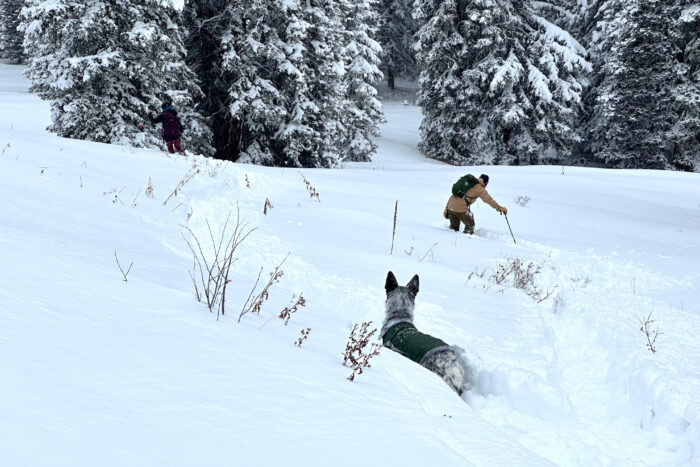
When you’re skiing or riding and the quality or texture of snow changes suddenly underneath you, it’s easy to lose control and crash — the same is true for dogs.
“If [the snow] is firm and you and your dog are going for a distance and all of a sudden you hit loose stuff or they go off the normal path, all of a sudden they’re post-holing and have a chance to sprain a shoulder,” said Reller.
That can also cause balls of snow to start building up between their paw pads faster, which freezes and starts ripping up their skin. Reller said he’s seen instances where all four of a dog’s paws were bleeding from snow cuts. One preventative remedy for this for dogs in general that walk or play in snow is to use Musher’s Secret.
Variable snow is a hard factor to control for. It’s an omnipresent challenge in the backcountry and one that dog owners just need to keep an eye on. If you find yourself punching through, or passing over variable snow, chances are your dog is too. If you see them struggling, it might be wise to slow down, take a break, or turn around.
Have the Right Gear
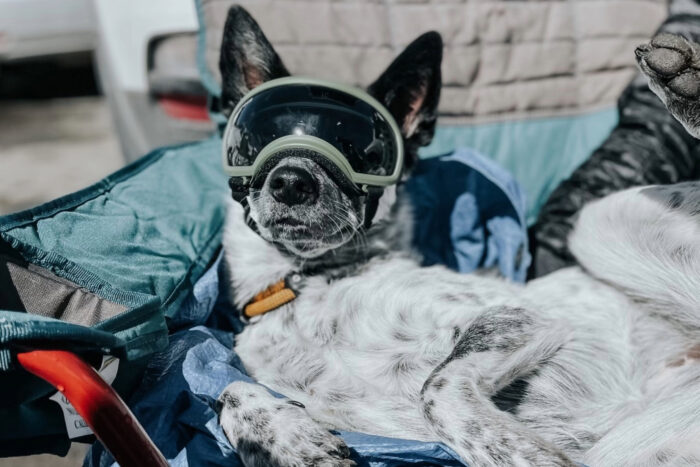
Over the years, we’ve put together a pretty solid gear cache for our dog. Companies like Ruffwear, Spark Paws, Rex Specs, OneTigris, and others make all kinds of dog accessories, equipment, and apparel. A lot of times, when it’s warm and our tour is an easy one, she’ll go sans gear. But situationally, we’ll bust out the dog booties, her jacket, or the doggles depending on the conditions and itinerary.
Reller says dog gear is great to keep on hand. He always carries booties for his avalanche rescue dogs and a dog jacket if they get too cold.
Musher’s wax is another thing Reller keeps in his pack. When applied to a dog’s paws, it forms a breathable, dense barrier that protects their pads from snow and ice. As you might assume, it was first used by dog mushers — but it’s useful for any dog owner who skis or spends time in the snow with their pup. Reller adds that plain old Vasoline achieves a similar purpose, although it won’t last as long as musher’s wax.
Rex Specs doggles (goggles for dogs) can be handy as well when traveling in the alpine. Dogs (especially those with lighter-colored eyes) can get sunburned or irritated eyes from too much exposure. When we’re going above treeline, hanging out somewhere with lots of sun exposure, or if it gets really windy, we use Rex Specs doggles to protect our dog’s eyes. She looks rad in them, too.
Finally, while it isn’t technically dog-specific gear, having a robust first-aid kit in your ski pack is always a good thing. Bandages and gauze work for dogs just as well as humans.
Snow Training for Dogs
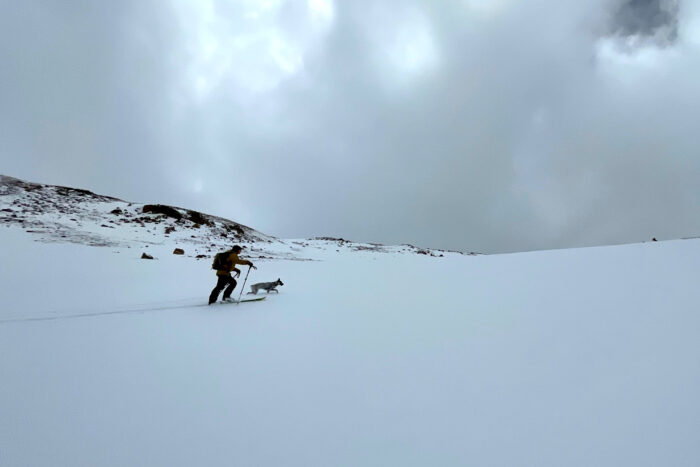
Unfortunately, C-RAD does not offer avalanche rescue training for average individuals and their dogs. You must be associated with an organization that does fieldwork: like a search and rescue group, sheriff’s department, or ski patrol. And even then, Reller says C-RAD is picky about the dogs they approve. The dog needs to be the right breed, to have come from a good breeder and have good lineage, and to have the right personality to work in less-than-ideal conditions.
And that’s just on the dog side of things. They’re just as selective about handlers. “What does the person bring to the table?” asked Reller. “They need to be an asset as well.”
General obedience training goes a long way by itself, though, he noted. It’s important that your ski dog has good recall, listens when you tell them to stop, and can wait in place until called.
There are trainers, like High Country Dogs (HCD), that offer courses for skijoring (cross-country skiing while being pulled by dogs). It’s a competitive sport, but one that lots of people engage in casually for fun. It’s not backcountry skiing by any means — but many of the dog skills translate. There are also books on skijoring like Ski Spot Run and Skijor With Your Dog that could be helpful resources as well.
On HCD’s website, it explains, “Skijoring can be done on any type of cross-country ski. At slower speeds or in deeper snow, it is done on classic or touring skis … even backcountry skis!”
So, even if skijoring isn’t your primary goal, training courses and books like these could still be useful — if for no other reason than to help familiarize your dog with skis, and to learn certain commands that could be useful in the backcountry.
Skiing With Dogs: The Final Word
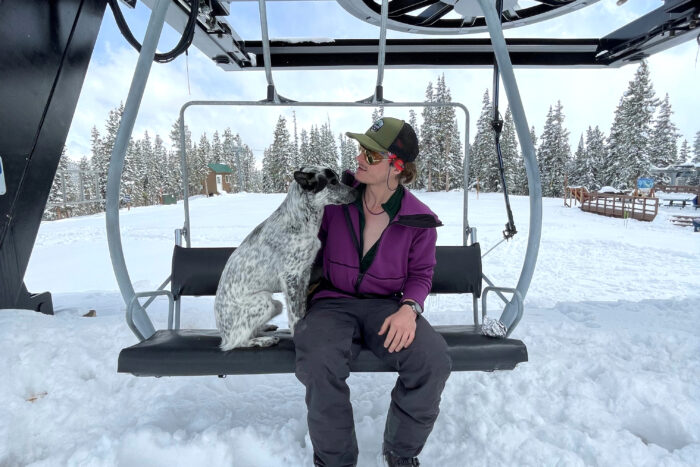
Backcountry skiing, ski touring, and cross-country skiing are all great forms of exercise for dogs. It’s also a team-building, bonding adventure for the two of you. In the backcountry, every aspect of a tour, from the hike to the summit to the ride down, feels different when you’re with your dog. It adds a layer of companionship that enriches the entire experience.
But it’s not all rainbows and dog biscuits out there. The backcountry is a dangerous place and skiing is an inherently dangerous sport. It requires dog owners to be attentive, think about their dogs (on top of safety and avalanche danger), and plan their days around them to make sure they have a great time and don’t get hurt.
Reller summed it up perfectly. “Know your dog and do what’s within your dog’s capabilities, not what you want to do,” he said. “Be your dog’s advocate. Don’t be the reason that they have a bad day.”
